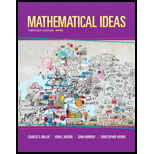
Mathematical Ideas (13th Edition) - Standalone book
13th Edition
ISBN: 9780321977076
Author: Charles D. Miller, Vern E. Heeren, John Hornsby, Christopher Heeren
Publisher: PEARSON
expand_more
expand_more
format_list_bulleted
Concept explainers
Question
Chapter 15.4, Problem 24E
To determine
The most disturbing impossibility of apportionment from given methods - quota rule violation, the Alabama paradox, the population paradox, or the new states paradox.
Expert Solution & Answer
Want to see the full answer?
Check out a sample textbook solution
Students have asked these similar questions
The idea that some educational requirements are necessary for many jobs today is calleda. status grouping.b. credentialism.c. meritocracy.d. conflict
Jefferson's method, Webster's method, and Adams's method require using a _______ quota.
Texas is home to more than one million undocumented immigrants, and most of them are stuck in low-paying jobs. Meanwhile, the state also suffers from a lack of skilled workers. The Texas Workforce Commission estimates that 133,000 jobs are currently unfilled, many because employers cannot find qualified applicants (The Boston Globe, September 29, 2011). Texas was the first state to pass a law that allows children of undocumented immigrants to pay in-state college tuition rates if they have lived in Texas for three years and plan to become permanent residents. The law passed easily back in 2001 because most legislators believed that producing college graduates and keeping them in Texas benefits the business community. In addition, since college graduates earn more money, they also provide the state with more revenue. Carol Capaldo wishes to estimate the mean hourly wage of workers with various levels of education. She collects a sample of the hourly wages (in $) of 30 workers with a…
Chapter 15 Solutions
Mathematical Ideas (13th Edition) - Standalone book
Ch. 15.1 - Choosing a Poster Dog by the Plurality Method A...Ch. 15.1 - Choosing a Poster Dog by the Plurality Method A...Ch. 15.1 - Choosing a Poster Dog by Alternative Methods For...Ch. 15.1 - Choosing a Poster Dog by Alternative MethodsFor...Ch. 15.1 - Observing the Effect of the Number of Candidates...Ch. 15.1 - Observing the Effect of the Number of Candidates...Ch. 15.1 - Observing the Effect of the Number of Candidates...Ch. 15.1 - Observing the Effect of the Number of Candidates...Ch. 15.1 - Observing the Effect of the Number of Candidates...Ch. 15.1 - Observing the Effect of the Number of Candidates...
Ch. 15.1 - Applying Four Voting Methods to a Voter Profile...Ch. 15.1 - Applying Four Voting Methods to a Voter Profile...Ch. 15.1 - Applying Four Voting Methods to a Voter Profile...Ch. 15.1 - Applying Four Voting Methods to a Voter Profile...Ch. 15.1 - Applying Four Voting Methods to a Voter Profile...Ch. 15.1 - Applying Four Voting Methods to a Voter Profile...Ch. 15.1 - Applying Four Voting Methods to a Voter Profile...Ch. 15.1 - Applying Four Voting Methods to a Voter Profile...Ch. 15.1 - Holding a Runoff Election One common solution to...Ch. 15.1 - Prob. 20ECh. 15.1 - Prob. 21ECh. 15.1 - Prob. 22ECh. 15.1 - Prob. 23ECh. 15.1 - Prob. 24ECh. 15.1 - Prob. 25ECh. 15.1 - Prob. 26ECh. 15.1 - Prob. 27ECh. 15.1 - The Pairwise Comparison Method Each table...Ch. 15.1 - Prob. 29ECh. 15.1 - Prob. 30ECh. 15.1 - The Borda Method Each table represents a Borda...Ch. 15.1 - Prob. 32ECh. 15.1 - Prob. 33ECh. 15.1 - Prob. 34ECh. 15.1 - Prob. 35ECh. 15.1 - Prob. 36ECh. 15.1 - The Coombs Method The Coombs method of voting is a...Ch. 15.1 - Prob. 38ECh. 15.1 - Prob. 39ECh. 15.1 - Prob. 40ECh. 15.2 - Identifying Violations of the Majority Criterion...Ch. 15.2 - Identifying Violations of the Majority Criterion...Ch. 15.2 - Identifying Violations of the Majority...Ch. 15.2 - Identifying Violations of the Majority Criterion...Ch. 15.2 - Identifying Violations of the Condorcet...Ch. 15.2 - Identifying Violations of the Condorcet Criterion...Ch. 15.2 - Identifying Violations of the Condorcet Criterion...Ch. 15.2 - Identifying Violations of the Condorcet Criterion...Ch. 15.2 - Prob. 9ECh. 15.2 - Prob. 10ECh. 15.2 - Prob. 11ECh. 15.2 - Prob. 12ECh. 15.2 - Prob. 13ECh. 15.2 - Prob. 14ECh. 15.2 - Prob. 15ECh. 15.2 - Prob. 16ECh. 15.2 - Prob. 17ECh. 15.2 - Prob. 18ECh. 15.2 - Prob. 19ECh. 15.2 - Irrelevant Alternatives in a Hare Method Election...Ch. 15.2 - 21. Explain why a violation of the majority...Ch. 15.2 - Prob. 22ECh. 15.2 - Prob. 23ECh. 15.2 - Prob. 24ECh. 15.2 - Prob. 25ECh. 15.2 - Prob. 26ECh. 15.2 - Prob. 27ECh. 15.2 - Prob. 28ECh. 15.2 - Prob. 29ECh. 15.2 - Prob. 30ECh. 15.2 - Prob. 31ECh. 15.2 - Prob. 32ECh. 15.2 - Prob. 33ECh. 15.2 - Prob. 34ECh. 15.3 - Find each quantity (to the nearest whole number)...Ch. 15.3 - Find each quantity (to the nearest whole number)...Ch. 15.3 - Find each quantity (to the nearest whole number)...Ch. 15.3 - Find each quantity (to the nearest whole number)...Ch. 15.3 - Solve each problem.
5. New Trees for Wisconsin...Ch. 15.3 - Apportioning Computers to Schools Enrollments for...Ch. 15.3 - Assigning Faculty to Courses The English...Ch. 15.3 - 8. Apportioning Sailboats to Resorts The number of...Ch. 15.3 - Prob. 9ECh. 15.3 - 10. Show that the Webster method apportionment of...Ch. 15.3 - Prob. 11ECh. 15.3 - Prob. 12ECh. 15.3 - Prob. 13ECh. 15.3 - Prob. 14ECh. 15.3 - Prob. 15ECh. 15.3 - Find the Huntington-Hill cutoff point for rounding...Ch. 15.3 - Creating a Profile of School Bus Riders Create a...Ch. 15.3 - Prob. 18ECh. 15.3 - Prob. 19ECh. 15.3 - Prob. 20ECh. 15.3 - The standard quotas rounded up to the nearest...Ch. 15.3 - Prob. 22ECh. 15.3 - Prob. 23ECh. 15.3 - Prob. 24ECh. 15.4 - Quota Rule Violations with the Jefferson Method In...Ch. 15.4 - Quota Rule Violations with the Jefferson Method In...Ch. 15.4 - Quota Rule Violations with the Jefferson Method In...Ch. 15.4 - Quota Rule Violations with the Jefferson Method In...Ch. 15.4 - Alabama Paradox with the Hamilton Method In each...Ch. 15.4 - Alabama Paradox with the Hamilton Method In each...Ch. 15.4 - Alabama Paradox with the Hamilton Method In each...Ch. 15.4 - Alabama Paradox with the Hamilton Method In each...Ch. 15.4 - Population Paradox with the Hamilton Method In...Ch. 15.4 - Population Paradox with the Hamilton Method In...Ch. 15.4 - Population Paradox with the Hamilton Method In...Ch. 15.4 - Population Paradox with the Hamilton Method In...Ch. 15.4 - New States Paradox with the Hamilton Method In...Ch. 15.4 - New States Paradox with the Hamilton Method In...Ch. 15.4 - New States Paradox with the Hamilton Method In...Ch. 15.4 - New States Paradox with the Hamilton Method In...Ch. 15.4 - Violations of the Quota Rule? For each...Ch. 15.4 - Violations of the Quota Rule? For each...Ch. 15.4 - Violations of the Quota Rule? For each...Ch. 15.4 - Prob. 20ECh. 15.4 - Prob. 21ECh. 15.4 - Prob. 22ECh. 15.4 - Prob. 23ECh. 15.4 - Prob. 24ECh. 15.4 - Prob. 25ECh. 15.4 - 26. The Jefferson and Adams methods are both...Ch. 15 - How many different complete rankings are possible...Ch. 15 - Prob. 2TCh. 15 - Prob. 3TCh. 15 - Prob. 4TCh. 15 - Prob. 5TCh. 15 - Why is the irrelevant alternatives criterion an...Ch. 15 - Prob. 7TCh. 15 - Prob. 8TCh. 15 - Prob. 9TCh. 15 - Prob. 10TCh. 15 - Prob. 11TCh. 15 - Prob. 12TCh. 15 - Prob. 13TCh. 15 - Prob. 14TCh. 15 - Prob. 15TCh. 15 - Prob. 16TCh. 15 - Prob. 17TCh. 15 - Prob. 18TCh. 15 - Prob. 19TCh. 15 - Prob. 20TCh. 15 - Prob. 21TCh. 15 - Prob. 22TCh. 15 - Prob. 23TCh. 15 - Prob. 24TCh. 15 - Prob. 25TCh. 15 - One hundred seats are to be apportioned to 4...Ch. 15 - Prob. 27TCh. 15 - Prob. 28TCh. 15 - Prob. 29TCh. 15 - Explain the Alabama paradox.Ch. 15 - Prob. 31TCh. 15 - Prob. 32T
Knowledge Booster
Learn more about
Need a deep-dive on the concept behind this application? Look no further. Learn more about this topic, subject and related others by exploring similar questions and additional content below.Similar questions
- A travel agency is concerned with the accuracy and appearance of itineraries prepared for its clients Defects can include errors in times, airlines, flight numbers, prices, car rental information, lodging, charge card numbers, and reservation numbers, as well as typographical errors. As the possible number of errors is nearly infinite, the agency measures the number of errors that do occur. The current process results in an average of five errors per itinerary. a. What are the three-sigma control limits for these defects? The UCL, equals and the LCL, equals. (Enter your responses rounded to three decimal places. If your answer for LCL, is negative, enter this value as 0.) b. A client scheduled a trip to Dallas. Her itinerary contained five errors. Interpret this information. O A. The number of defects is within the control limits, so it is assumed that the process is not in control O B. The number of defects is within the control limits, so it is assumed that the process is in control…arrow_forwardSolve the problem. Which apportionment method may produce the Alabama paradox? Jefferson Webster Adams O Hamiltonarrow_forwardWhich of the following is a flaw in apportionment methods? Jefferson Plan Hare System Hamilton Plan Alabama Paradoxarrow_forward
- 9. A grant and a newly passed levy will allow a county to buy 13 new fire trucks for its fire precincts. The new trucks are going to be allotted to the precincts based on the number of times each precinct had to respond to calls in the last six months. Use the Hamilton Apportionment Plan and the table below to determine the number of fire trucks each precinct will receive. District Number of Calls D-1 45 D-2-1 73 D-2-2 100 D-3 67 D-4-1 179 D-4-2 95arrow_forwardSolve the problem. Which apportionment method may produce the Alabama paradox? Adams Hamilton Jefferson Websterarrow_forwardA travel agency is concerned with the accuracy and appearance of itineraries prepared for its clients. Defects can include errors in times, airlines, flight numbers, prices, car rental information, lodging, charge card numbers, and reservation numbers, as well as typographical errors. As the possible number of errors is nearly infinite, the agency measures the number of errors that do occur. The current process results in an average of three errors per itinerary.a. What are the two-sigma control limits for these defects?b. A client scheduled a trip to Dallas. Her itinerary contained six errors. Interpret this information.arrow_forward
- QUESTION 11 An apportionment method exists that satisfies the quota condition and is free from both the population paradox and the Alabama paradox. True Falsearrow_forwardShould religion be taught in all school? Propose a procedure to settle this issue.arrow_forward2. "Dalmatian Darnation," by Kathy SparlingA greedy dog breeder named Spreckles , Bred puppies with numerous frecklesThe Dalmatians he sought, Possessed spot upon spotThe more spots, he thought, the more shekels.His competitors did not agree, That freckles would increase the fee.They said, “Spots are quite nice, But they don't affect price;One should breed for improved pedigree.”The breeders decided to prove, This strategy was a wrong move.Breeding only for spots, Would wreak havoc, they thought.His theory they want to disprove.They proposed a contest to Spreckles, Comparing dog prices to freckles.In records they looked up, One hundred one pups:Dalmatians that fetched the most shekels.They asked Mr. Spreckles to name, An average spot count he'd claimTo bring in big bucks. Said Spreckles, “Well, shucks,It's for one hundred one that I aim.”Said an amateur statistician, Who wanted to help with this mission.“Twenty-one for the sample, Standard deviation's ample:They examined one hundred…arrow_forward
- 2. "Dalmatian Darnation," by Kathy SparlingA greedy dog breeder named Spreckles , Bred puppies with numerous frecklesThe Dalmatians he sought, Possessed spot upon spotThe more spots, he thought, the more shekels.His competitors did not agree, That freckles would increase the fee.They said, “Spots are quite nice, But they don't affect price;One should breed for improved pedigree.”The breeders decided to prove, This strategy was a wrong move.Breeding only for spots, Would wreak havoc, they thought.His theory they want to disprove.They proposed a contest to Spreckles, Comparing dog prices to freckles.In records they looked up, One hundred one pups:Dalmatians that fetched the most shekels.They asked Mr. Spreckles to name, An average spot count he'd claimTo bring in big bucks. Said Spreckles, “Well, shucks,It's for one hundred one that I aim.”Said an amateur statistician, Who wanted to help with this mission.“Twenty-one for the sample, Standard deviation's ample:They examined one hundred…arrow_forward2. "Dalmatian Darnation," by Kathy SparlingA greedy dog breeder named Spreckles , Bred puppies with numerous frecklesThe Dalmatians he sought, Possessed spot upon spotThe more spots, he thought, the more shekels.His competitors did not agree, That freckles would increase the fee.They said, “Spots are quite nice, But they don't affect price;One should breed for improved pedigree.”The breeders decided to prove, This strategy was a wrong move.Breeding only for spots, Would wreak havoc, they thought.His theory they want to disprove.They proposed a contest to Spreckles, Comparing dog prices to freckles.In records they looked up, One hundred one pups:Dalmatians that fetched the most shekels.They asked Mr. Spreckles to name, An average spot count he'd claimTo bring in big bucks. Said Spreckles, “Well, shucks,It's for one hundred one that I aim.”Said an amateur statistician, Who wanted to help with this mission.“Twenty-one for the sample, Standard deviation's ample:They examined one hundred…arrow_forwardState A has a population of 25,500 and has 15 representatives. State B has a population of 20,150 and has 13 representatives. Which state unfairness of this apportionment? more poorly represented? What is the absolute unfairness of this apportionment? What is the relative Which state is more poorly represented? Select the correct answer below and, if necessary, fill in the answer boxes within your choice. O A. State B is more poorly represented with an average constituency of. State A is represented better with an average constituency of. O B. State A is more poorly represented with an average constituency of State B is represented better with an average constituency of. (Type integers or decimals.)arrow_forward
arrow_back_ios
arrow_forward_ios
Recommended textbooks for you
 Discrete Mathematics and Its Applications ( 8th I...MathISBN:9781259676512Author:Kenneth H RosenPublisher:McGraw-Hill Education
Discrete Mathematics and Its Applications ( 8th I...MathISBN:9781259676512Author:Kenneth H RosenPublisher:McGraw-Hill Education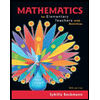 Mathematics for Elementary Teachers with Activiti...MathISBN:9780134392790Author:Beckmann, SybillaPublisher:PEARSON
Mathematics for Elementary Teachers with Activiti...MathISBN:9780134392790Author:Beckmann, SybillaPublisher:PEARSON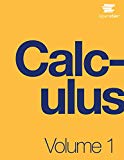
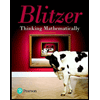 Thinking Mathematically (7th Edition)MathISBN:9780134683713Author:Robert F. BlitzerPublisher:PEARSON
Thinking Mathematically (7th Edition)MathISBN:9780134683713Author:Robert F. BlitzerPublisher:PEARSON Discrete Mathematics With ApplicationsMathISBN:9781337694193Author:EPP, Susanna S.Publisher:Cengage Learning,
Discrete Mathematics With ApplicationsMathISBN:9781337694193Author:EPP, Susanna S.Publisher:Cengage Learning,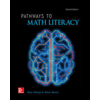 Pathways To Math Literacy (looseleaf)MathISBN:9781259985607Author:David Sobecki Professor, Brian A. MercerPublisher:McGraw-Hill Education
Pathways To Math Literacy (looseleaf)MathISBN:9781259985607Author:David Sobecki Professor, Brian A. MercerPublisher:McGraw-Hill Education

Discrete Mathematics and Its Applications ( 8th I...
Math
ISBN:9781259676512
Author:Kenneth H Rosen
Publisher:McGraw-Hill Education

Mathematics for Elementary Teachers with Activiti...
Math
ISBN:9780134392790
Author:Beckmann, Sybilla
Publisher:PEARSON


Thinking Mathematically (7th Edition)
Math
ISBN:9780134683713
Author:Robert F. Blitzer
Publisher:PEARSON

Discrete Mathematics With Applications
Math
ISBN:9781337694193
Author:EPP, Susanna S.
Publisher:Cengage Learning,

Pathways To Math Literacy (looseleaf)
Math
ISBN:9781259985607
Author:David Sobecki Professor, Brian A. Mercer
Publisher:McGraw-Hill Education
Probability & Statistics (28 of 62) Basic Definitions and Symbols Summarized; Author: Michel van Biezen;https://www.youtube.com/watch?v=21V9WBJLAL8;License: Standard YouTube License, CC-BY
Introduction to Probability, Basic Overview - Sample Space, & Tree Diagrams; Author: The Organic Chemistry Tutor;https://www.youtube.com/watch?v=SkidyDQuupA;License: Standard YouTube License, CC-BY